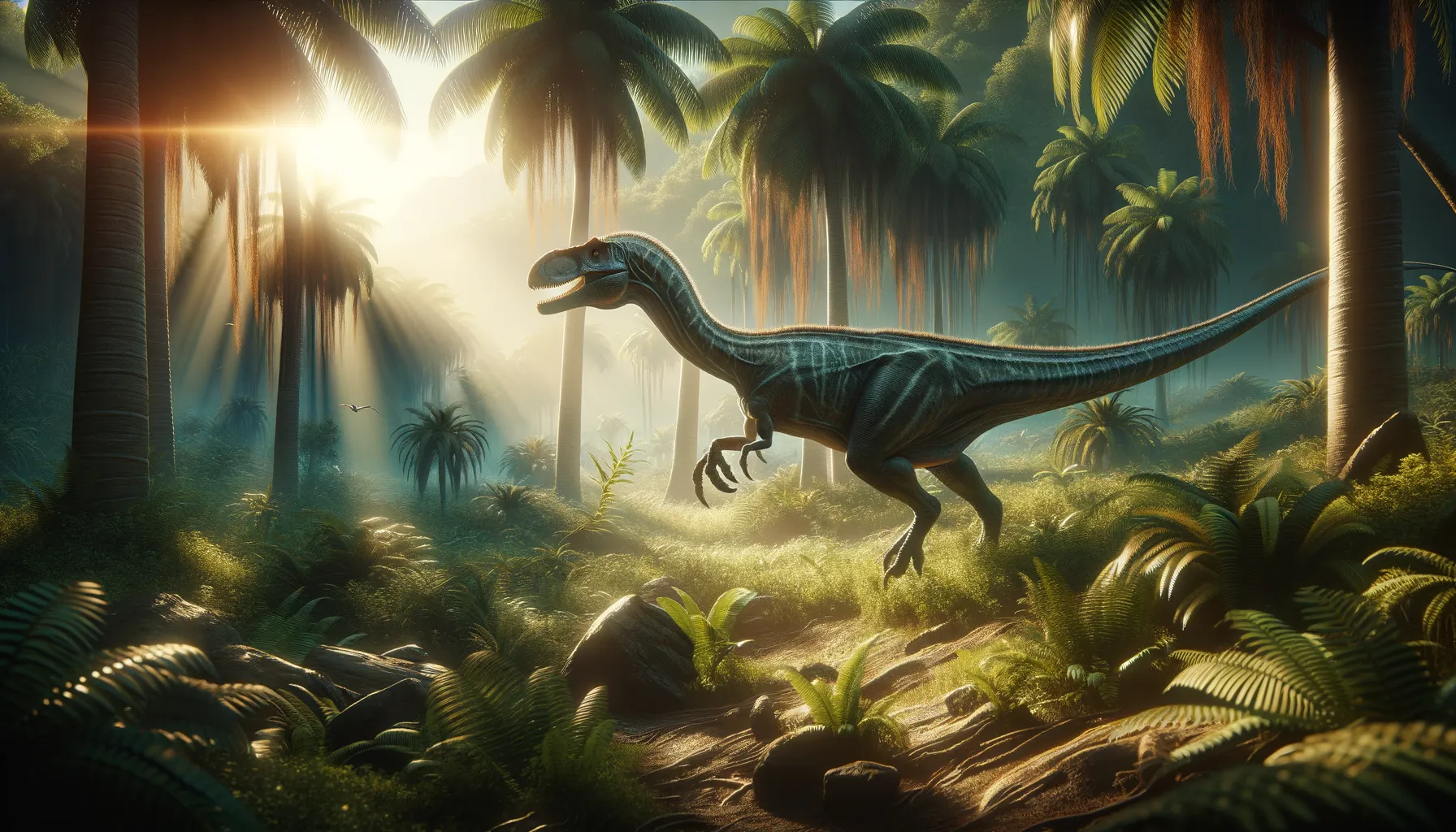
Hypselospinus
Graceful herbivore of the Early Cretaceous.
Period
Cretaceous
Length
About 6 meters in length.
Height
Stood around 2 meters tall at the hip.
Weight
Estimated to weigh approximately 500 to 1,000 kg.
Hypselospinus was a plant-eating dinosaur from the Early Cretaceous period, characterized by its long limbs and tail. As a member of the iguanodont group, it had the ability to move both on two and four legs. This adaptability may have helped it forage in diverse environments while avoiding predators. Its fossils have helped scientists understand more about the diversity and evolutionary history of early herbivorous dinosaurs.
Diet
Hypselospinus was primarily herbivorous, feeding on a variety of plant materials. Its teeth were well-suited for chewing robust, fibrous vegetation.
Hunting
Being a herbivore, Hypselospinus did not hunt other animals. Instead, it likely foraged for food, using its beak-like mouth to bite off leaves and other vegetation.
Environmental challenges
During the Cretaceous period, Hypselospinus faced several environmental challenges, including changing climates and fluctuating sea levels. These changes could lead to shifts in plant availability, driving these dinosaurs to adapt their foraging strategies. Additionally, competition with other herbivorous species may have shaped their feeding behaviors and territorial ranges. Surviving predators constituted an on-going challenge, requiring vigilance and swift movement to evade capture.
Speed
Moderate, likely adapted for a mix of agility and endurance.
Lifespan
Estimated to be similar to other ornithopods, around 20 years.
First discovery
First described in 1889 by Richard Lydekker from fossil remains in England.
Fun Facts
- Hypselospinus is a dinosaur that lived during the Early Cretaceous period, around 130 million years ago.
- Its name, Hypselospinus, means 'high spine' because of the distinctive tall spines on its back.
- This dinosaur was a herbivore, which means it primarily ate plants.
- Hypselospinus was a relatively small dinosaur, measuring about 6 meters in length.
- It is believed that Hypselospinus could move quickly on its two hind legs to escape predators.
- Fossils of Hypselospinus have been found in what's now known as the Isle of Wight, a treasure trove of dinosaur discoveries.
- Hypselospinus was closely related to other well-known dinosaurs like Iguanodon and Mantellisaurus.
Growth and Development
Hypselospinus, like many dinosaurs, likely experienced rapid growth during its juvenile years. This fast growth rate was crucial for reaching maturity and increasing survival chances against predators. The growth might have been supported by a rich and varied diet, abundant in the lush, prehistoric environment. Common in many dinosaur species, family or herd protection could have played a role in their developmental stages, providing safety in numbers.
Habitat
Hypselospinus inhabited lush floodplains and forested areas during the Early Cretaceous. Its environment provided abundant plant material, supporting its herbivorous diet. The combination of wetlands and forested land offered diverse ecosystems, promoting biodiversity and sustainability. Seasonal changes in the habitat could have influenced migration patterns, potentially leading to adaptations over generations.
Interaction with other species
Hypselospinus lived alongside a variety of other dinosaur species, which could lead to competitive interactions for food resources. The presence of carnivorous dinosaurs necessitated defensive strategies, such as vigilance and potential herd behaviors. Cooperative behaviors with other herbivores might have occurred, allowing shared knowledge of safe zones and rich feeding grounds. Although primarily focusing on plants, indirect interactions with insect species would have taken place, especially during pollination periods.
Natural lifespan
Its natural lifespan was likely consistent with other medium-sized herbivorous dinosaurs, reaching up to 20 years.
Reproduction
It likely laid eggs, as is common with dinosaurs, with nests that were possibly cared for in groups to ensure protection from predators. Parental care, if present, would have been important for maintaining the safety and learning of young dinosaurs regarding food sources and environmental dangers.
Social behaviour
Hypselospinus might have lived in small groups or herds, providing mutual protection against predators. Group living would have also facilitated shared knowledge of foraging areas and migratory patterns. Social hierarchies could have existed, potentially influencing feeding order and mate selection.
Fossil locations
The notable fossil remains of Hypselospinus were discovered in the Wealden Group of southern England, offering crucial insights into its existence. These locations have provided a rich source of fossil material that supports studying Early Cretaceous ecosystems. Additional fragments from sites in Europe help piece together its distribution and lifestyle during its time.
